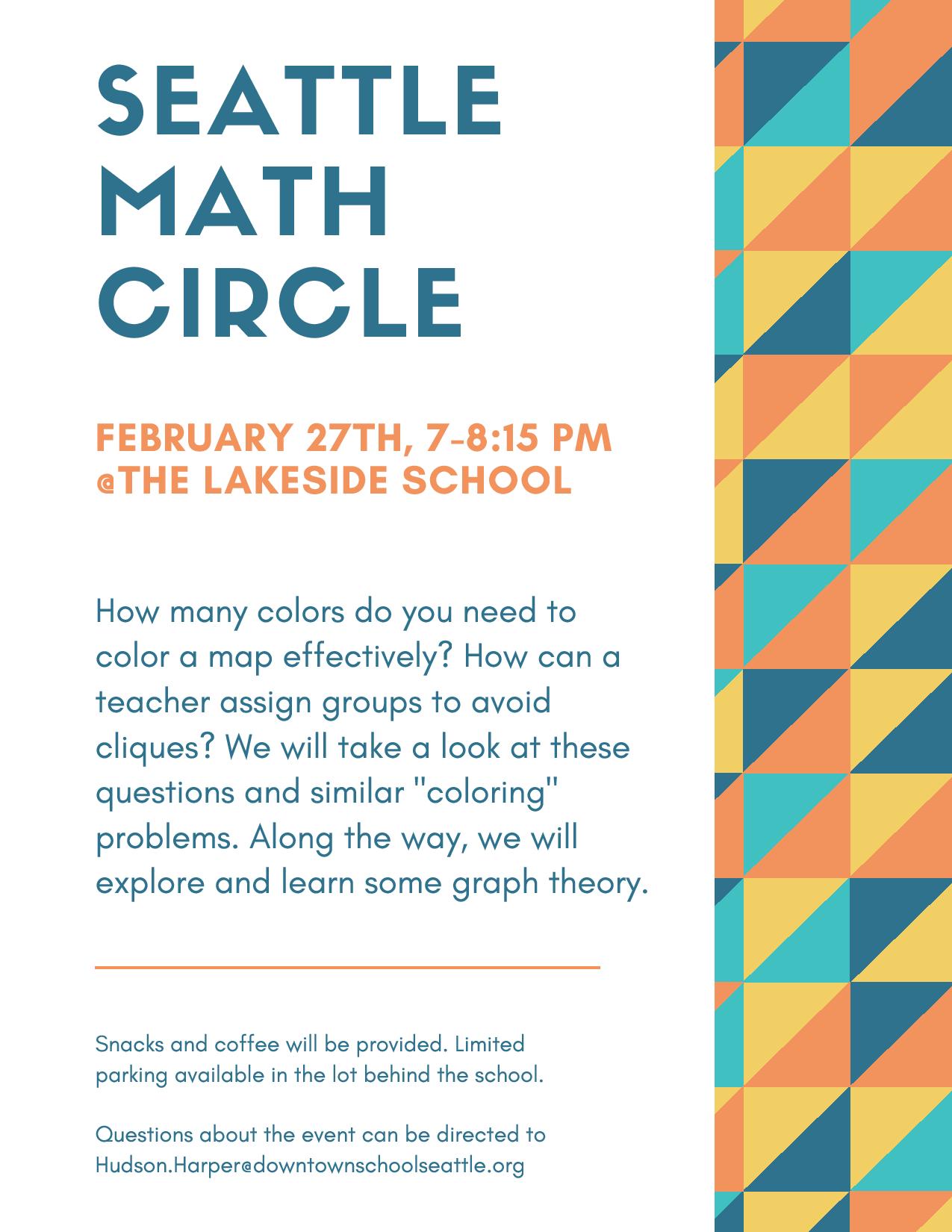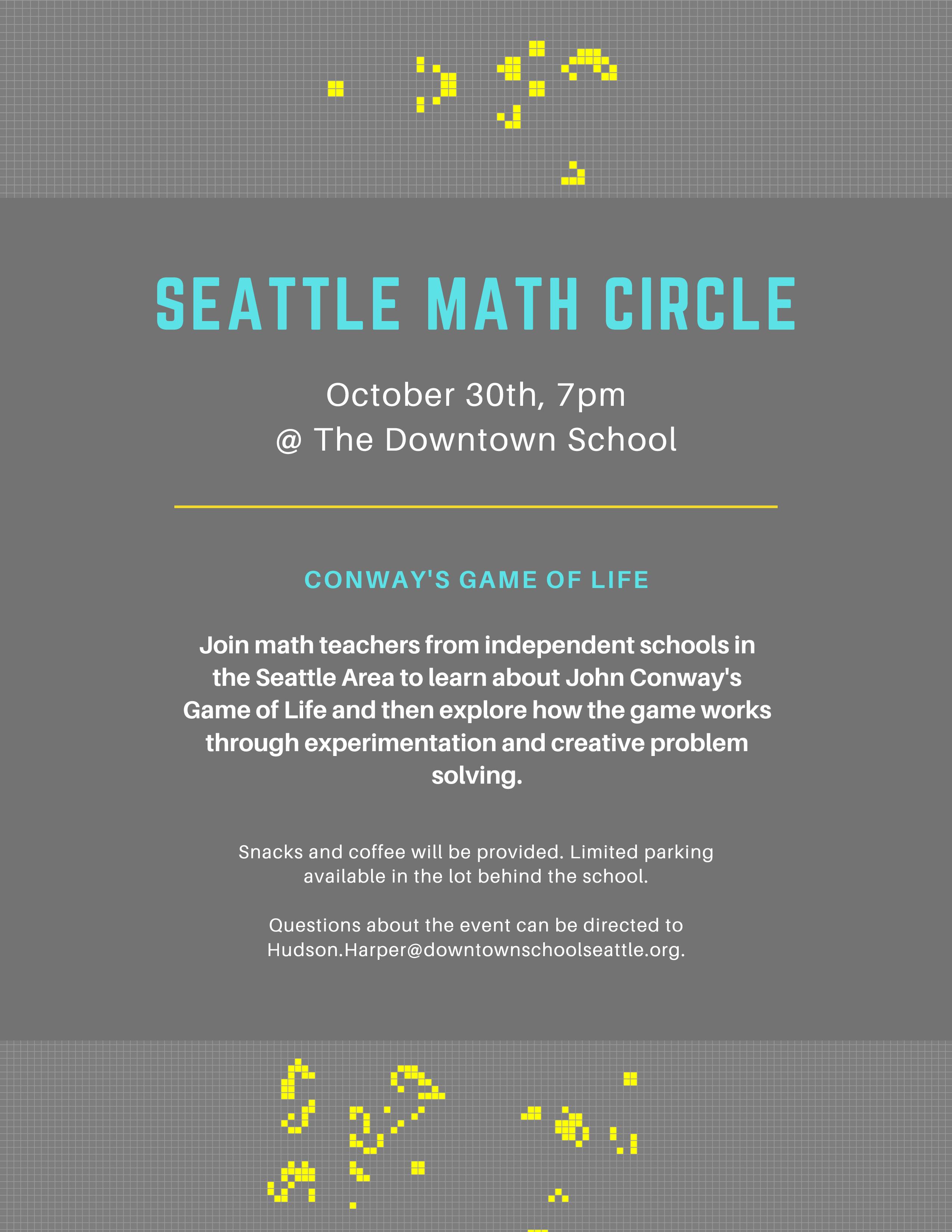February 27, 2020
We live in a world made up of complex networks from social groups, to proffesional colleagues, to the most complex network on the planet, the internet. One set of tools that can help us to make sense of these networks is graph theory.
A graph is a collection of vertices/nodes that have edges between them to represent connections or relationships. An important subset of graph theory tackles the problem of how can we color the vertices of our graph so that no two neighboring/connected vertices have the same color.
In this math circle, we will see how graph theory provides us a useful framework for discussing real world problems and then set out to solve some problems that teachers might encounter on a regular basis.

